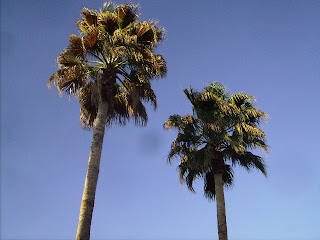
Palm Sunday is the sixth Sunday in Lent and the Sunday before Easter. It is celebrated in all major Christian churches - Roman Catholic, Protestant and Orthodox. In popular parlance it is called Palm Sunday because it commemorates the triumphant entry of Jesus into Jerusalem to celebrate the Passover. The Gospels describe how the crowds lined the route, spread palm branches on the road and waved palm leaves in their hands enthusiastically as Jesus rode in on his donkey. Hence, the name Palm Sunday.
However, until 1970 the official name of this day in the Roman Catholic Church was the Second Sunday of the Passion. In 1970 the the Roman Catholic Church changed the official name to Passion Sunday which has caused confusion for those who were used to referring to the fifth Sunday in Lent as Passion Sunday (that Sunday is now officially called the fifth Sunday of Lent). But, for the average Christian, Catholic and non-Catholic alike, this day is still known as Palm Sunday.
In addition to palm trees being common in the Mediterranean world and its leaves a logical material to cover a dusty road, palm leaves were also a symbol of victory and triumph in the ancient world. The cheering crowds along the road gave evidence to the effectiveness of Jesus' message and the large following he had attracted. It is no wonder that the religious and political establishment were concerned about his popularity and the potential threat to their earthly power that it represented. However, Jesus' kingdom was not of this earth and he was not seeking earthly power. While his followers hailed his entry into Jerusalem with palm leaves which symbolized triumph and victory, Jesus himself elected to be borne on the back of a humble donkey rather than a horse. The horse is a powerful animal that was used in war. The horse represented conquest and power. Throughout history horses were the preferred means of travel for the rich and powerful. The donkey, however, is puny compared to the horse and is a simple beast of burden used by the common masses. As Christ repeatedly stated, his kingdom was not of this world but rather that of heaven. He urged his followers to focus on and prepare for eternal life in heaven, not political change on earth.
The memory of Christ's triumphant entry into Jerusalem just before his crucifixion was kept alive and celebrated from the earliest days by the Church in Jerusalem. The celebration included re-enactments of the Lord's triumphant entry into Jerusalem and the the waving of palms. The custom gradually spread to other churches in the eastern Mediterranean, reaching Constantinople (modern day Istanbul, Turkey), capital of the Roman Empire in the east, by the fifth century. In time the celebration spread throughout the Church and was retained by many Protestant churches following the Reformation. In areas where palms were not available, people used branches from local trees that bloomed in the spring. Today, modern transportation enables churches throughout the world to easily obtain and distribute palms on this day.
In many Orthodox Churches Palm Sunday is referred to as Entry into Jerusalem. Due to the fact that for religious purposes many of these churches use the Julian rather than the Gregorian calendar, this date, like that of other religious holidays is usually a week or more later than their counterparts in the Western Christianity. However, just like western churches, Entry into Jerusalem or Palm Sunday is celebrated with the distribution of palms or branches from local trees and marks the beginning of Holy Week. These churches also celebrate the day before Palm Sunday as Lazarus Saturday where they commemorate the raising of Lazarus from the dead by Jesus. On Lazarus Saturday many of the faithful spend time weaving the palms into crosses for distribution the next day. This custom weaving of palms into crosses can also be found in many Protestant Churches and, if one looks around a Catholic Church they will see that many of their fellow participants in the mass have woven the palm branch they received upon entering the church into a cross.
In Roman Catholic Churches in America palm leaves are distributed to the congregation as they enter the church. There are two Gospel readings on this, Passion (Palm) Sunday with the first being read at the start of the Mass. The congregation then holds up their palm leaves and the priest blesses them. Following the Epistle, the Passion Story from the Gospel according to St. Matthew is read. This is a long reading (Matthew 26:14 – 27:66) with sections divided among three or four readers and parts for the congregation. We again hear the story of Jesus' betrayal, capture, trial, torture, crucifixion, death and burial. The congregation takes the palm leaves home where they are kept as a reminder of the Gospel message of the passion. The palms are collected by the Church just before the beginning of Lent and burned to produce the ashes used on Ash Wednesday.






No comments:
Post a Comment